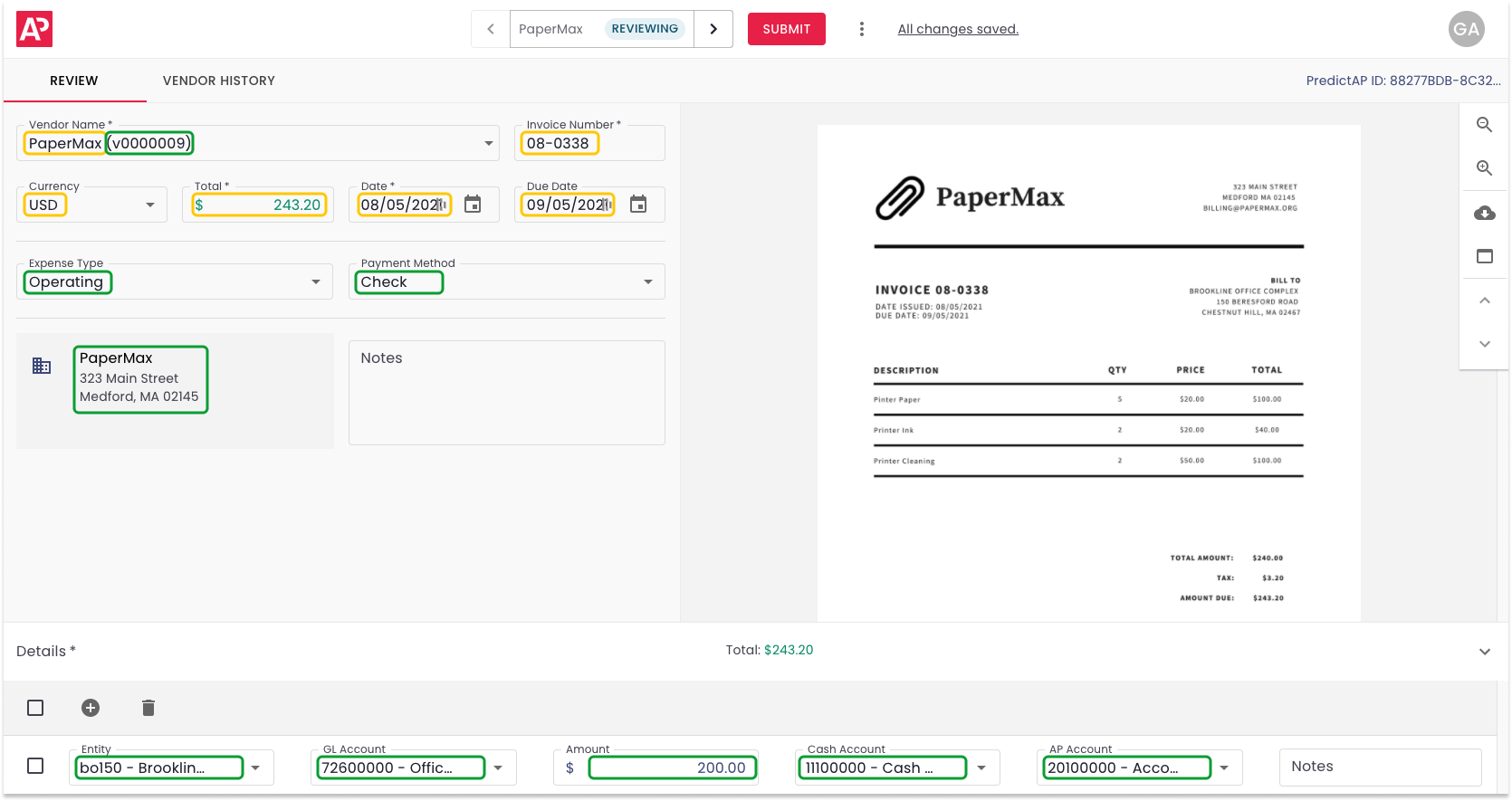Share this
What is a fully coded invoice?
by Karo Sadowicz on May 3, 2022 9:30:00 AM
Invoice coding is a critical and often time-consuming step in the procure-to-pay process. It's essential for allocating expenses to the right entities and accounts, and getting the right vendor paid on time.
Despite its importance, invoice coding has been left behind the massive growth in the AP automation, procure-to-pay, and invoice capture solution landscape.
This has been a frustrating discovery for CTOs and CFOs at large real estate companies. They’ve invested lots of time and money in implementing AP automation and streamlining their review and approval processes, only to find that complaints around invoice coding persist. No matter what solutions they’ve brought in, they still don’t have a hands-free way to get to fully coded invoices.
Let’s take a closer look at invoice coding to understand why.
What is invoice coding?
During invoice coding, an AP specialist or property manager enters various account codes to ensure the invoice is paid to the right vendor, from the right expense accounts, by the right property—among other details. It completes the invoice capture process, and is required before an invoice can be sent for review and approved for payment.
Although some invoice capture solutions can ingest invoice data and enter it into a system of record (also known as indexing), coding has historically been a manual process that relies on monotonous data entry.
What about AP automation?
AP automation has been essential in improving invoice review, approval, and tracking workflows. But only a fully coded invoice can fully leverage the promise of AP automation.
Until the invoice is keyed and coded in the system, it’s creating a bottleneck and inhibiting the full ROI on your automated workflow system.
Invoice anatomy: what's in a code?
The invoice and its associated information in your system is an invoice record. While the details might differ slightly from one platform to the next, the key components are essentially the same. Let’s look at the anatomy of an invoice record.
Invoice Header
The invoice header captures the key information from a new invoice: vendor name, remit-to address, due dates, totals, and so forth. It is primarily informed by information printed on the original invoice, then augmented with more detailed information like vendor codes or payment type.
Many invoice capture solutions can lift and enter this information into your system. While some rely on services and outsourced data entry, many are smart enough to recognize and enter the information requiring someone to type.
Invoice Image
Attached to your digital invoice record, is an image of the original invoice that makes it easy to view the printed information and to double check any data entries are correct.
Invoice Details
Invoice details are where humans get frustrated and invoice capture solutions reach their limit.
This is where your AP specialist or property manager does the complicated work of entering codes that indicate what budget or expense account the invoice will be paid from, separates various line items to allocate them correctly, maybe does some math to divide up utility bills between three properties, adds codes for those properties, and anything else that will help route the invoice correctly.
So, what about coding?
Coding varies from one property, team, region, entity, department, company, budget account to another. It’s unique and specific to each organization, and can take some time to master.
The most effective and efficient AP coders learn by repetition, and hold all the context and expertise in their memory. It's a form of tribal knowledge that's hard to master, and difficult to replace.
So what is a fully coded invoice?
A fully coded invoice has been converted into an invoice record with complete header data, entity, general ledger, expense, allocation codes, payment info, everything you need to send it through the appropriate approval workflow.

An example of a fully coded invoice in PredictAP: yellow highlighted fields show header data, easily lifted from the original invoice image (right). The green highlighted detail fields typically require manual data entry and extensive expertise.
An invoice is unlikely to get paid—or paid on time—before it’s fully coded. And when your team is managing a high volume of invoices during a busy season, it’s easy for things to get lost in the shuffle.
Because the coding process still relies on manual data entry, an invoice can be somewhere in your company’s offices, but might not yet exist as a record in your accounting system. It is here but not here—like Schroedinger’s cat.
The key to fully automated invoice processing
Removing manual data entry from invoice coding is the last frontier of true AP automation.
It’s the accelerant to getting more from the AP automation investment you’ve already made, and a way to help your existing AP team accomplish more without added stress.
As they spend less time on manual work, their job satisfaction increases alongside productivity, opening the door to higher value work, and freeing up your time for your next transformative fintech implementation.
Need to improve accounts payable efficiency? Download our new ebook!
Share this
- AP Efficiency (31)
- PredictAP News (25)
- AP Best Practices (22)
- AI Best Practices (20)
- Real Estate Accounts Payable (20)
- Real Estate Industry (14)
- Invoice Coding (11)
- Customers (9)
- Invoice Capture (9)
- Accounts Payable Staffing & Hiring (7)
- Partners (2)
- Knowledge Management (1)
- Senior Living (1)
- Yardi (1)
- December 2025 (4)
- November 2025 (7)
- October 2025 (4)
- September 2025 (5)
- August 2025 (5)
- July 2025 (6)
- June 2025 (3)
- May 2025 (2)
- April 2025 (2)
- March 2025 (2)
- February 2025 (2)
- January 2025 (1)
- December 2024 (1)
- November 2024 (1)
- September 2024 (1)
- August 2024 (3)
- July 2024 (1)
- June 2024 (2)
- May 2024 (3)
- April 2024 (1)
- January 2024 (1)
- March 2023 (3)
- February 2023 (1)
- November 2022 (1)
- September 2022 (1)
- August 2022 (2)
- July 2022 (1)
- May 2022 (2)
- April 2022 (2)
- February 2022 (2)
- December 2021 (1)
- November 2021 (1)
- April 2021 (1)
- March 2021 (1)
